|
Unfortunately, even with 30 years balloon experience and also flying one of the best balloons in the world things can sometimes still go wrong. The pilot, Josep Lladó Costa, who has many years experience alpine and long distance flying, safely landed his precious Aconcagua balloon on the sea alongside a rescue boat to enable all three on board to be rescued. This is the balloon that Josep flew successfully over the Aconcagua in South America last year.
Here is the story of what happened in Josep’s own words: |
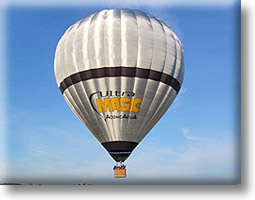 |
We took off with the Aconcagua T-180 Ecomagic balloon in Dobbiacco (Italy) at 11:00 a.m. with wind forecast of 320-330º and a speed at altitude of 50 knots. We were 3 persons on board and we took 5 cylinders of 30 Kg to have enough gas for a long flight with the double layer Ecomagic balloon
.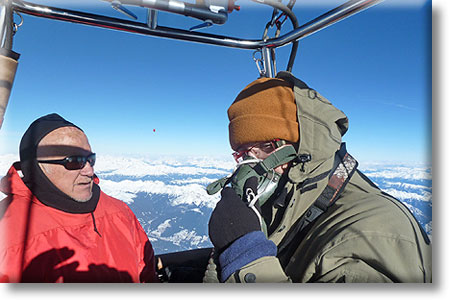 |
The flight was wonderful all the time, though when we soon reached the plane of Italy, it was quite covered with clouds at around 2000 ft. As we had only used less than 2 cylinders, we decided to continue because my direction was indicating that we should be in Croatia in about 40 minutes according to our GPS map. When we thought we were entering the peninsula of Istria in Croatia, we went under the clouds, and we discovered we were over the sea. In the GPS I was carrying, (see pictures) Croatia was not in detail, but it was marked as ground where we decided to descent.
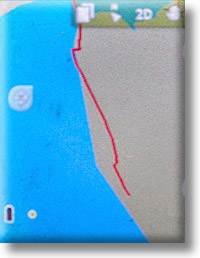 |
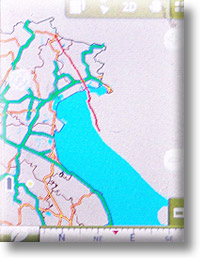 |
I though that as the GPS map was not detailed and it was showing straight lines, that maybe we were just half a mile from the coast. We could have come back as there was a wind around 2000 ft that was from 150º but it was light and variable. Then I decided to go up again, as in this GPS (I was not carrying any other with map) was showing we could go inland further south even with the direction of 335º as average. This was marking me the best position about 15 km inland in the peninsula, so I thought we were safe.
When I was high again, I asked the air traffic control to give me other winds higher to see if we could go more inland, but the winds were all in the same direction. When I decided to go down again and we crossed through the clouds, we saw that we were in the middle of the sea and I thought it was unbelievable, but true, that the map was wrong by such a distance, this distance that later we knew to be about 15 miles. Afterwards we now think it was the international waters limit that what was marked at the map as land!
We still had a lot of gas, about 70 Kg , which means at least 4 hours of flight with the Aconcagua, so that was not the problem. I decided then to call immediately Zagreb Tower to say it was an emergency because to climb again to go further the wind was too parallel to the coast to risk. It was still 14:30 so we had enough daylight and gas to wait for rescue. Also they had our position as my transponder was working well mode S.
I put on the ELT, so we could be located more easily. In the meantime I advised the Kon-Tiki team and our retrieve car to help us, mainly if the rescue boat was not arriving. Fortunately the rescue boat arrived in one hour or so. We were moving at around 10 knots and the rescue boat was too small to take the balloon. So we had to put it on the water to go on board of the boat and we could only take the instruments. Unfortunately we had to leave the balloon there, so I disconnected the cylinders (still with more than 45 Kg of gas) and open the FDS to lay down the envelope. As the envelope is what I was the most sad to leave, I did not disconnect it from the basket.
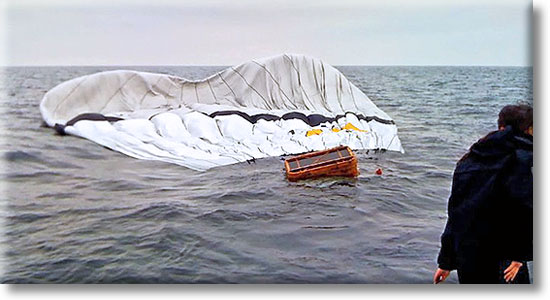 |
| © A.Magai 2011 |
Next 2 days we went to search for the balloon together with the Kon-Tiki team with 2 big boats with fish-finder (sonar to see under the boat). Even with the ELT transmitting and having the new position every 2 hours, we could not find it. The sea was 45 m deep in all the area and we really thought it would not be so difficult to find it the next morning.
Fortunately we were all safe and thanks to the professionalism of the Police rescue boat and also the Zagreb control tower that passed the information. So it was “just” the balloon that was lost.
After that I have thought a lot how to prepare the balloon when going to the sea, and here are my recommendations in a similar case:
1) Put all equipment in bags hanged short in the burner frame at the rear part of the direction it is moving.
2) When having to leave the balloon, because there is no way to take it with the boat, when the envelope is down already in the water do the following:
a. Ask the rescue team about the depth of the water.
b. Release one corner of the basket wires and attach one side of the drop line to this wires and the other side at the crown line after releasing it from the burner frame. If you don’t know the deep of water, attach it just to one cylinder and not to the basket.
c. Release the other 3 karabiners of the envelope, so it remains free.
d. Remove also the burner (once you are out, the basket should turn upside down). If you have the possibility to take the burners to the boat, take them, otherwise put them attached in the bottom of the basket.
Of course this is an opinion and every pilot should do what he thinks is better and also all situations are different and maybe require different solutions, but to have all this in mind can help.
Josep M. LLadó Costa."